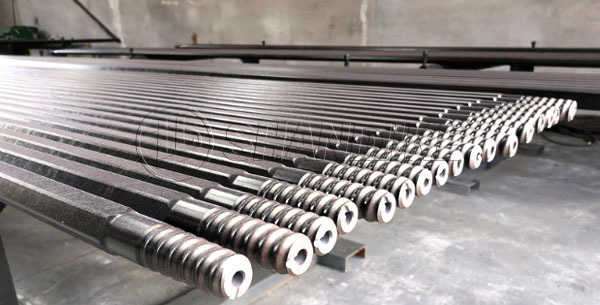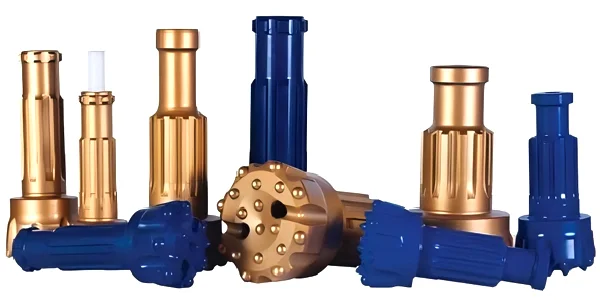The reasons for the wear of button drill bits
Gauge Wear on Button Bits
When drilling through materials like hard sandstone and quartzite, the wear on the bit circumference tends to be more pronounced. Most of this wear occurs on the outer buttons located at the periphery, causing the bits to round off around their circumference. Consequently, when the buttons are sharpened, the diameter across the gauge buttons becomes smaller than that of the bit shoulders, leading to a tendency for the bit to bind within the hole. To rectify this and restore adequate clearance, the circumference of the bit shoulder must be ground down. Additionally, the bit face often requires grinding to restore the protrusion of the buttons.
Body Wash of Button Bits
In non-abrasive materials where carbide wear is minimal, extended drilling intervals are feasible. This allows for prolonged chip removal around the bits, resulting in more wear on the bit body compared to the buttons. Similar wear patterns are observed in fractured and loose materials, where excessive agitation and grinding are necessary for hole cleaning and maintaining an open hole during retraction. To prevent button tear-outs and shearing under these conditions, it’s crucial to schedule grinding intervals to reduce button protrusions.
Over Drilling Consequences
The detrimental effects of over drilling bits may not be immediately evident, but they are significant. A commonly overlooked fact is that using dull bits not only slows down drilling rates but also significantly increases drilling costs by shortening the lifespan of drilling tool components, rock drills, and drill rig parts. Over drilling is unquestionably responsible for over 90% of all premature button failures. However, it is well-documented that eliminating over drilling and performing proper sharpening significantly reduces premature button bit insert failures.




